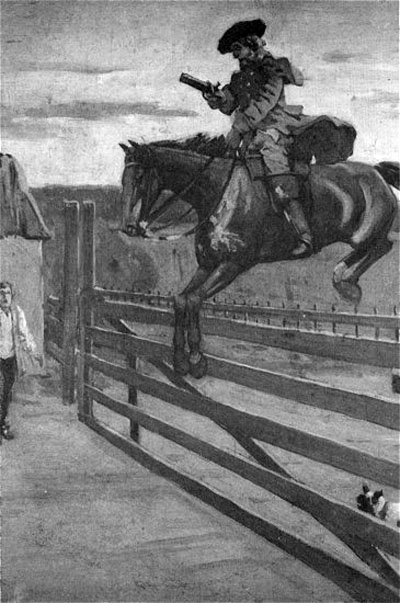Apple TV+’s historical comedy series ‘The Completely Made-Up Adventures of Dick Turpin’ follows Dick Turpin, an “accidental” highwayman who becomes the leader of the infamous but incompetent Essex gang. Using his wit and a whole lot of luck, Turpin finds a way to increase the reputation of the gang. Turpin is not a born criminal but his decision to lead the gang makes him a target of Jonathan Wilde, the thief-taker general who sets out to capture him. Turpin is based on a real highwayman but the storylines that form the narrative of the show are highly fictionalized, just like several accounts available concerning the notorious Englishman!
Dick Turpin: The Truth and Fiction
Richard Turpin, widely known as Dick Turpin or Turpin the Butcher, was born in 1705 in Essex, England. Since his father was a butcher, Turpin knew the basics of the profession, which made him a part of the Gregory gang, which was also known as the Essex gang. In the show, Turpin becomes the leader of the gang upon accidentally causing the death of Tom King, who was not associated with the Gregory gang, led by Samuel Gregory, in reality. The group was involved in livestock robbery and they needed a butcher to cut up the meat to sell the same easily, which led them to Turpin. When the Gregory gang turned their efforts to house raids from livestock robbery, Turpin stayed away from them but not for long.

Turpin allegedly started to accompany his fellow gang members in raiding houses. But the gang didn’t last long, especially after the authorities succeeded in capturing several of its members, leading to their execution. After the breaking up of the group, Turpin became a highwayman. He committed several high-profile robberies between 1735 and 1737. He joined forces with Tom/Matthew King and Stephen Potter. In the series, King forces Turpin to help him commit a robbery, and gets killed accidentally. In reality, they were equals and formed a trio of robbers with Potter.
It is also alleged that Turpin killed King. Richard Bayes, an eyewitness who wrote ‘The Genuine History of the Life of Richard Turpin,’ penned about the incident in his work. “Turpin, who was waiting not far off on Horseback, hearing a Skirmish came up, when King cried out, ‘Dick, shoot him, or we are taken by G—d;’ at which Instant Turpin fir’d his Pistol, and it mist Mr. Bayes, and shot King in two Places, who cried out, ‘Dick, you have kill’d me;’ which Turpin hearing, he rode away as hard as he could,” Bayes wrote. The authenticity of the account is highly contested.
Even though Turpin is based on an actual highwayman, the writers of the series heavily relied on fiction to craft the period comedy’s storylines. “Dick Turpin is, in our British folklore, a bit like Billy the Kid and Jesse James are in American folklore, or a bit like Ned Kelly is in Australian folklore. […] We mined the actual history of Dick Turpin and [changed] just the storylines, really,” executive producer Kenton Allen told The Daily Beast. The reliance on fiction enabled the show to find comedy in the life of the highwayman.
“We wanted to have this sort of modern character in this quite hard world with these sort of scary characters and people are getting killed around him and shot,” Noel Fielding, who plays Turpin in the show, told The Independent. “He, somehow, in a childlike, weird way, manages to avoid danger and get them out of trouble every week,” he added.
Dick Turpin’s Death
Sometime around 1737, Dick Turpin started using the alias, John Palmer. He became a horse thief in East Yorkshire and Lincolnshire, England. In July 1737, Turpin stole three horses and left one behind for his father to use, which attracted the attention of the authorities. Horse theft was a capital offense punishable by death at the time. In 1738, he was arrested for killing a man’s game cock in the street and threatening to shoot the latter as well. While he was being imprisoned, Turpin was charged with the theft of three horses and found guilty.

“It is very hard upon me, my Lord, because I was not prepar’d for my defence,” Turpin told a judge when the latter asked him if he had any reason why he should not be sentenced to death. The claim wasn’t deemed valid as the judge moved forward with the sentence, which led the highwayman to his execution. The day before his hanging, Turpin hired five mourners for three pounds and ten shillings. On April 7, 1739, he was taken to Knavesmire in York in an open cart. He “behav’d himself with amazing assurance” and “bow’d to the spectators as he passed,” as per James Sharpe’s ‘The Myth of the English Highwayman.’
Turpin was shortly hanged. Since the authorities relied on the short-drop method of hanging, he must have died of slow strangulation. “Turpin behaved in an undaunted manner; as he mounted the ladder, feeling his right leg tremble, he spoke a few words to the topsman, then threw himself off, and expir’d in five minutes,” reads an account published by The Gentleman’s Magazine. He was buried in the graveyard of St. George’s Church, Fishergate, in York. As per reports, his body was stolen by body snatchers soon after his burial.
Read More: Where is The Completely Made-up Adventures of Dick Turpin Filmed?


You must be logged in to post a comment.